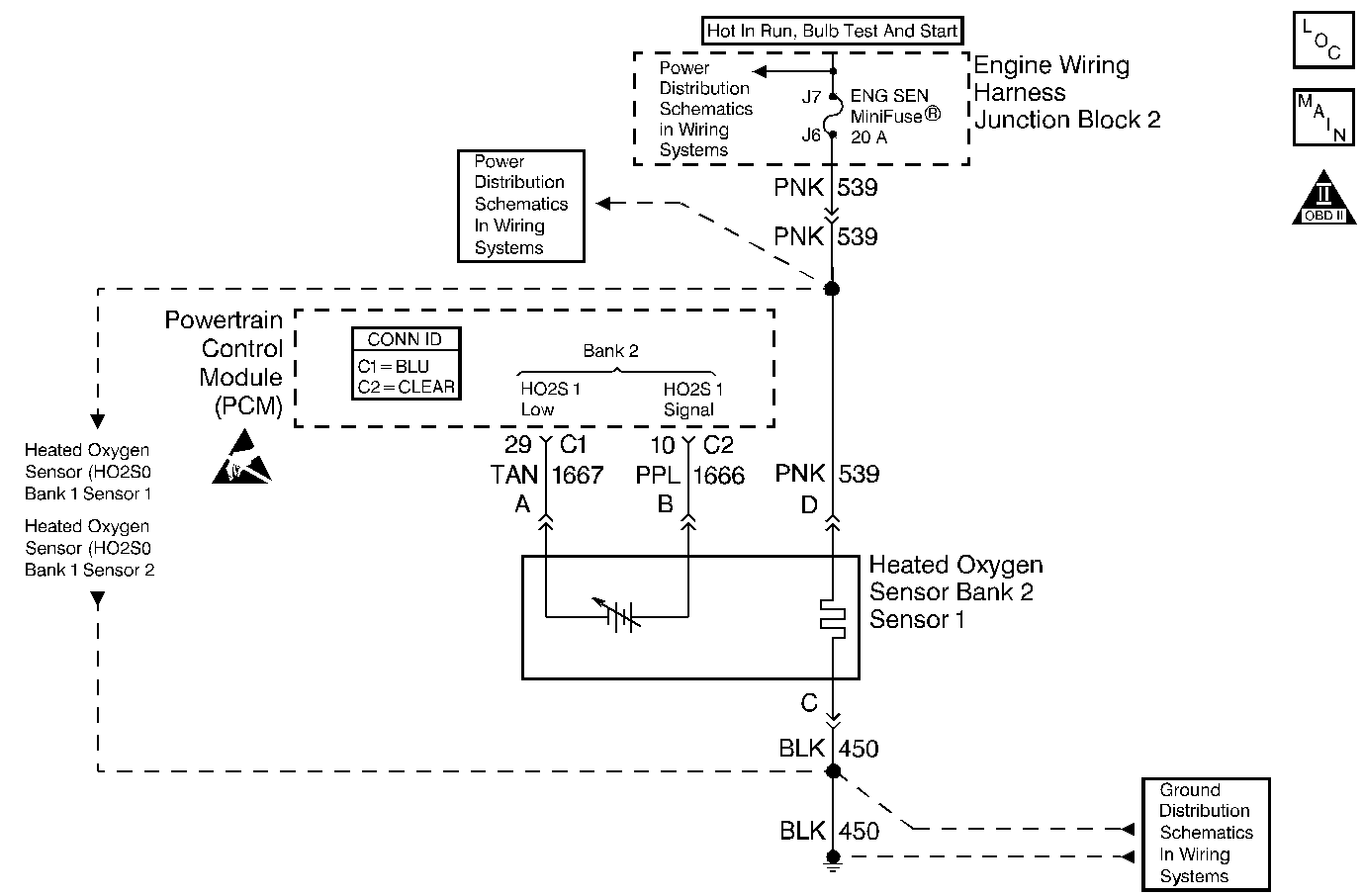
Circuit Description
Heated oxygen sensors are used to minimize the amount of time required
for closed loop fuel control operation and to allow accurate catalyst monitoring.
The oxygen sensor heater greatly decreases the amount of time required
for fuel control sensors to become active. An Oxygen sensor
heater is also required by catalyst monitor HO2S to maintain a sufficiently
high temperature which allows accurate exhaust oxygen content readings
further from the engine. The PCM will run the heater test only after
a cold start (determined by engine coolant and intake air temperature
at the time of startup) and only once during an ignition cycle.
When the engine is started the PCM will monitor the HO2S voltage. When
the HO2S voltage indicates a sufficiently active sensor, the PCM
looks at how much time has elapsed since startup. If the PCM determines
that too much time was required for the HO2S to become active, this
DTC will set. The time it should take the HO2S to reach operating
temperature is based on the engine coolant temperature at start-up
and the average mass air flow since startup (higher average airflow
or higher startup engine coolant temperature = shorter time to HO2S
activity).
Conditions for Running the DTC
| • | No Misfire, CKP, Fuel injector, MAF, TP, EVAP, IAT, MAP, Fuel
trim, EGR or ECT DTCs are present. |
| • | Intake air temperature (IAT) is less than 35°C (95°F)
at startup |
| • | Engine coolant temperature (ECT) is less than 35°C (95°F)
at startup. |
| • | IAT and ECT are within 6°C (11°F) of each other
at start-up. |
| • | Average mass air flow for the sample period is less than 20 g/s. |
| • | The system voltage is between 9 and 18 volts. |
Conditions for Setting the DTC
HO2S voltage remains within 150 mV of the bias voltage (about
450 mV) for a longer amount of time than it should. The amount
of time ranges between 42 seconds and 2 minutes.
Action Taken When the DTC Sets
| • | The PCM will illuminate the malfunction indicator lamp (MIL) during
the second consecutive trip in which the diagnostic test has been run and
failed. |
| • | The PCM will store conditions which were present when the DTC
set as Freeze Frame/Failure Records data. |
Conditions for Clearing the MIL/DTC
| • | The PCM will turn OFF the malfunction indicator lamp (MIL) during
the third consecutive trip in which the diagnostic has run and
passed. |
| • | The history DTC will clear after 40 consecutive warm-up
cycles have occurred without a malfunction. |
| • | The DTC can be cleared by using a scan tool. |

